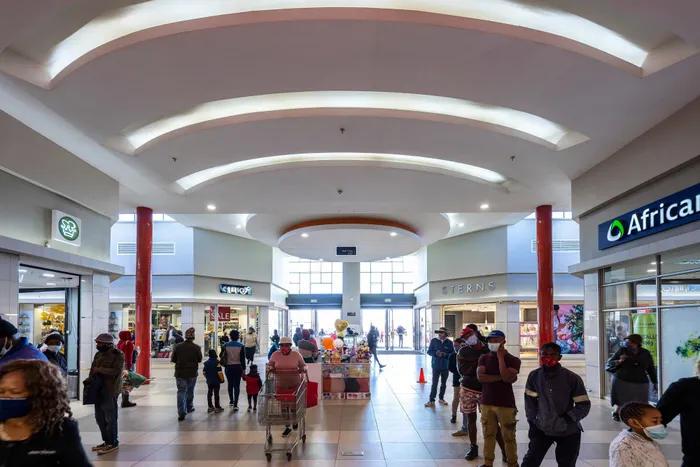Retail activity remains subdued as consumers cut back on spending

File photo of Evaton Mall. Retailers for clothing and textiles, food and beverages were upbeat in February, with clothing and textiles sales rising by 5.5% year-on-year. Picture: Supplied
Retail activity in South Africa has remained subdued as consumers have continued cutting back spending on general household and hardware items as the rising cost of living squeezes out disposable cash.
Statistics South Africa (StatsSA) yesterday said retail trade sales fell for the third consecutive month in February, decreasing by 0.5% following a 0.8% decrease in January.
This third consecutive month of declines in retail activity was worse than market estimates of a 0.3% fall, mainly reflecting hard electricity load shedding and elevated living costs for consumers.
StatsSA’s deputy director for distributive trade statistics Raquel Floris said general dealers and hardware, paint and glass were the biggest drags on growth.
“General dealers recorded a decrease of 1.5% year-on-year. Hardware, paint and glass recorded a decline of 7.7%,” Floris said.
“Other retailers that performed poorly in February include those specialising in pharmaceuticals and medical goods, and household furniture and appliances.”
However, retailers for clothing and textiles, food and beverages were upbeat in February, with clothing and textiles sales rising by 5.5% year-on-year.
On a monthly basis, retail trade fell by 0.1% in February, after a 1.5% rise in January, which was the strongest in a year.
Investec economist Lara Hodes said the retail environment in South Africa remained challenging as retailers have to contend with the dire electricity supply situation which continues to impede their ability to operate optimally.
According to the BER, in a number of instances retailers are attempting to mitigate load shedding by spending revenue that may have been invested or returned as profit on backup power solutions.
“Consumer sentiment is very subdued, with high inflation and interest rates weighing heavily on disposable incomes. According to BankservAfrica, average real take-home salaries fell by 8.3% year-on-year in February,” Hodes said.
“We don’t anticipate a meaningful pick-up in household consumption expenditure which makes up around two-thirds of GDP (gross domestic product), in the short-term. Growth for this year is projected at 0.2% with downside risks persisting, due to the escalation in rotational load shedding.”
Struggling power utility Eskom was implementing heightened levels of load shedding in February, curtailing business operational hours and increasing spending on diesel for retailers to keep the lights on.
Indeed, the sharp increase in production and operational costs induced by load shedding is expected to weigh on corporate margins and consequently, employment and wage gains.
FNB senior economist Siphamandla Mkhwanazi said while non-labour income remained resilient, the outlook was less optimistic, mainly due to weaker corporate earnings prospects and their impact on dividend pay-outs.
Mkhwanazi said that these, combined with elevated inflation and debt servicing costs, as well as depressed consumer confidence, suggested muted household consumption expenditure going forward.
“Nevertheless, the credit market remains active, with consumers accumulating consumption credit at a faster pace, which could provide auxiliary support to household consumption,” he said.
“However, this may also increase the risk of credit defaults due to slower income growth and the accumulation of more expensive lines of credit, resulting in strained household financial positions down the line.”
BUSINESS REPORT